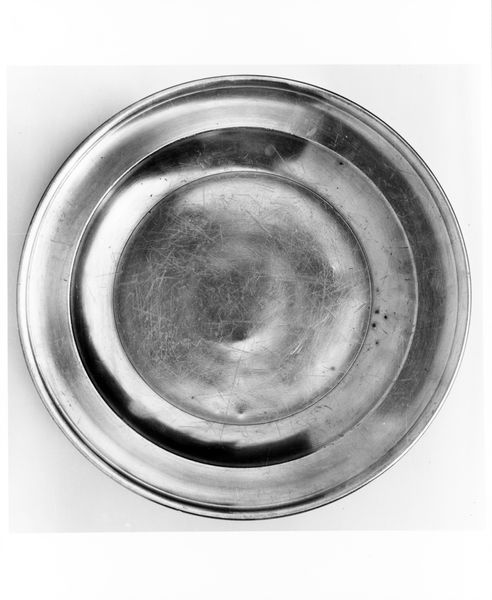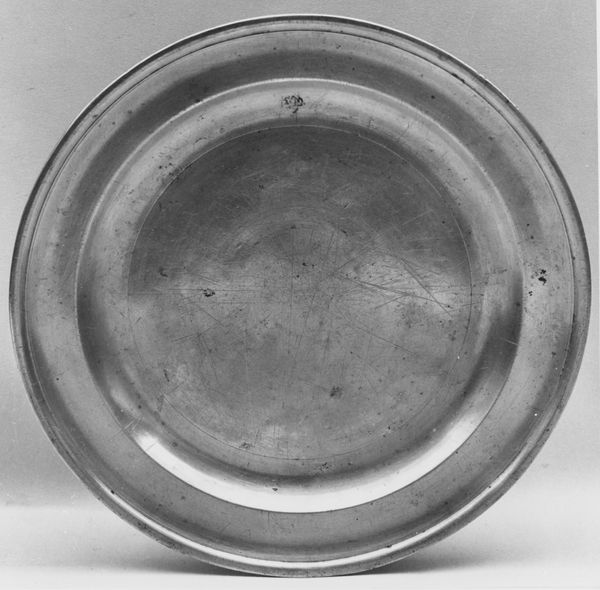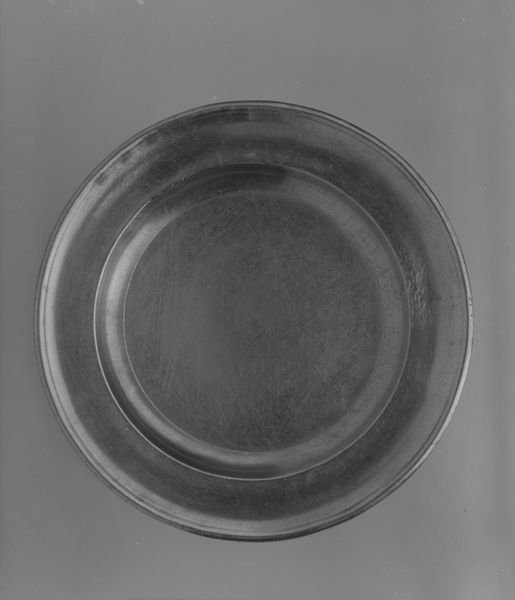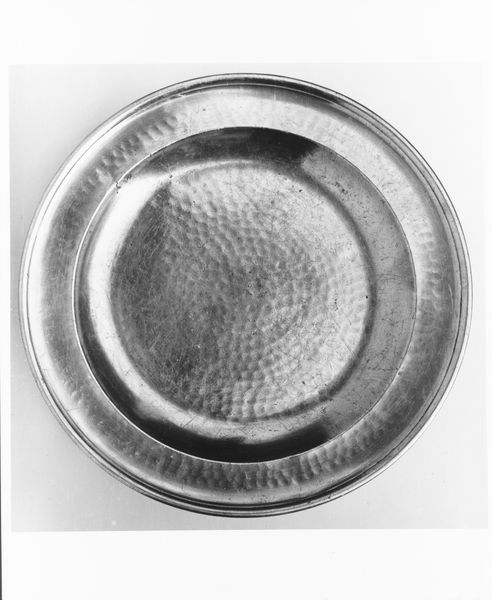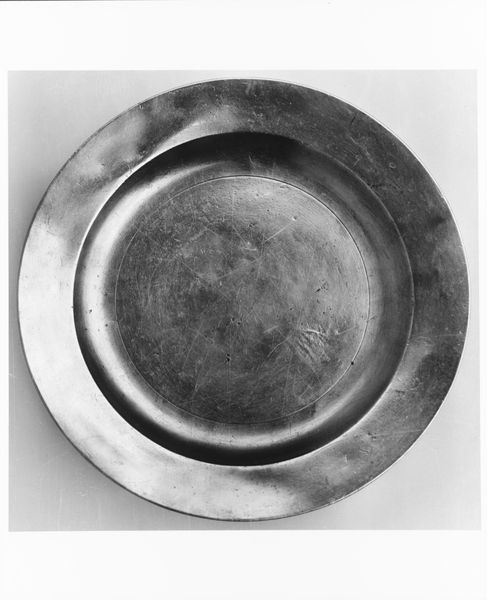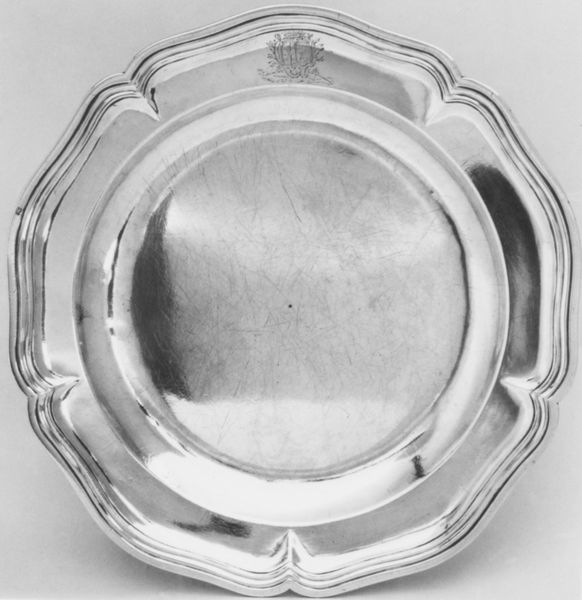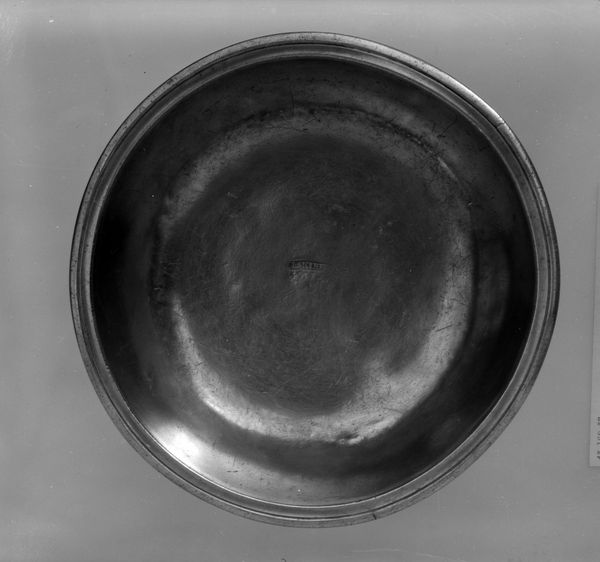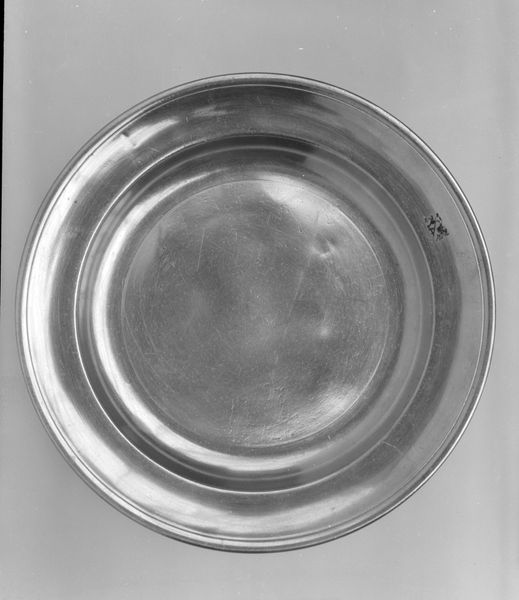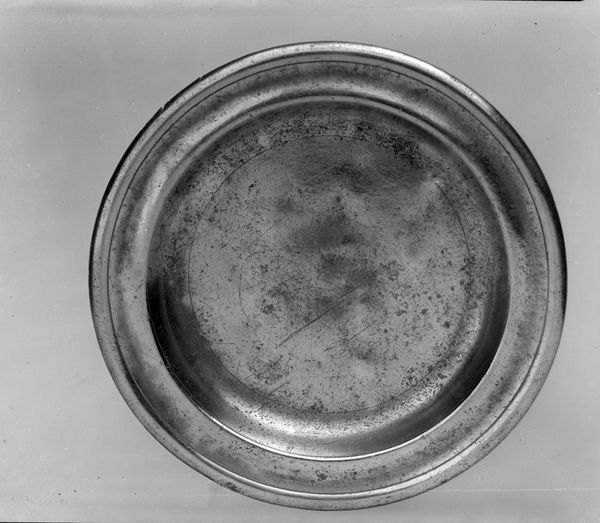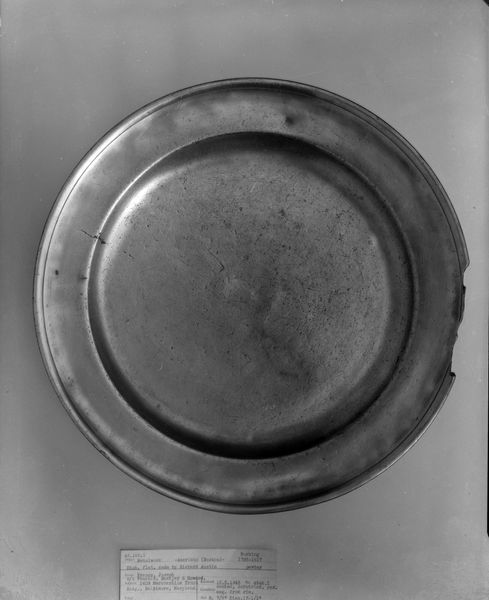
silver, photography
#
silver
#
photography
Dimensions: H. 3/4 in. (1.9 cm); Diam. 8 3/8 in. (21.3 cm)
Copyright: Public Domain
Curator: The object before us, made between 1791 and 1806, is simply called "Plate," and the medium used appears to be silver. Editor: It feels... austere, almost monastic in its simplicity. The circular form is very grounding. Curator: Indeed. Its function as a simple utilitarian object reflects shifts in the colonial American relationship between the crafts economy, consumption, and labor, wouldn't you say? I mean, look at those hammering marks and subtle imperfections. It reflects an ideology of production! Editor: Absolutely. One wonders who would have used it? What specific hands would have held it during mealtimes, what level of the societal structure might it represent, in that moment in time? A single silver plate can evoke volumes. Consider the historical backdrop; it could have witnessed births, deaths, celebrations within a family facing a very changing socio-political environment. Curator: Right! The surface, the wear and tear – each scratch a trace of material life. One can consider, who crafted it? Who owned it? Editor: These objects transcend their utilitarian function when viewed through that lens; domestic tools often provide poignant narratives about gender, status, and evolving social dynamics. Curator: Considering who did the labour, for instance; did enslaved persons ever polish the piece? What level of skill had to go into the finishing, and the overall fashioning, in its particular moment in material culture? Editor: It reminds me how easily everyday objects become relics imbued with significance simply through lived history, through being passively present during world-shaping historical movements, like the independence that transformed the Americas at that precise moment. A testament to how even mundane objects can reflect greater sociopolitical events and reveal stories about its culture and the inequalities present in the post-colonial America in the late 1700s. Curator: Exactly! So much information bound up in a humble plate. Editor: It highlights how physical objects carry memory in profound, tangible ways.
Comments
No comments
Be the first to comment and join the conversation on the ultimate creative platform.
